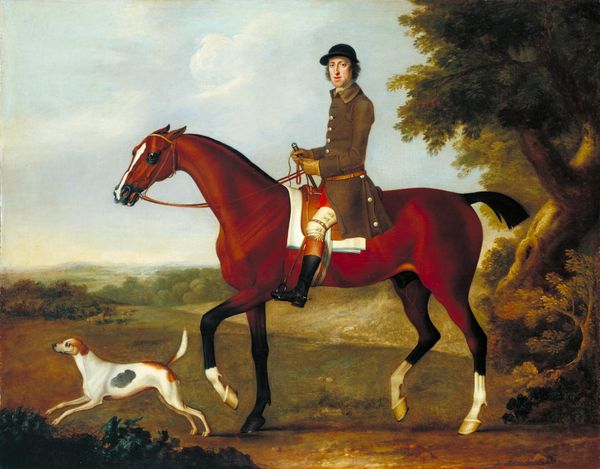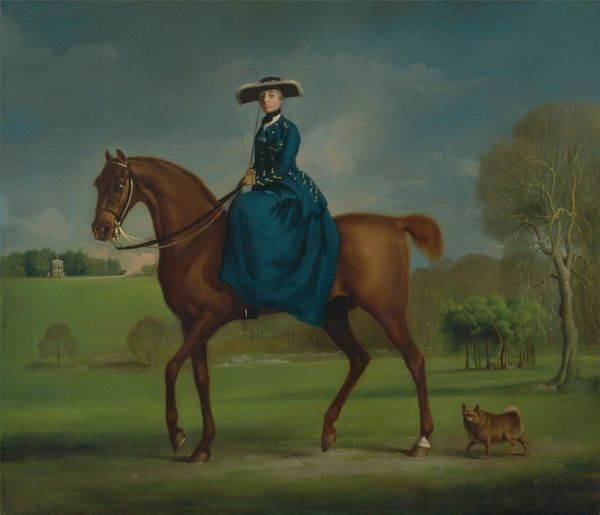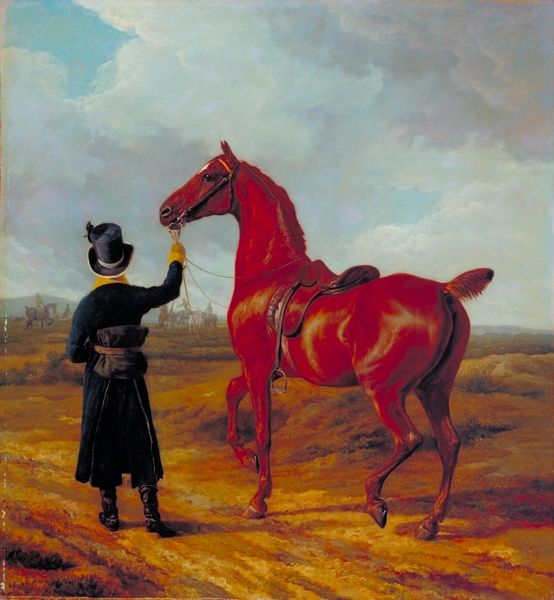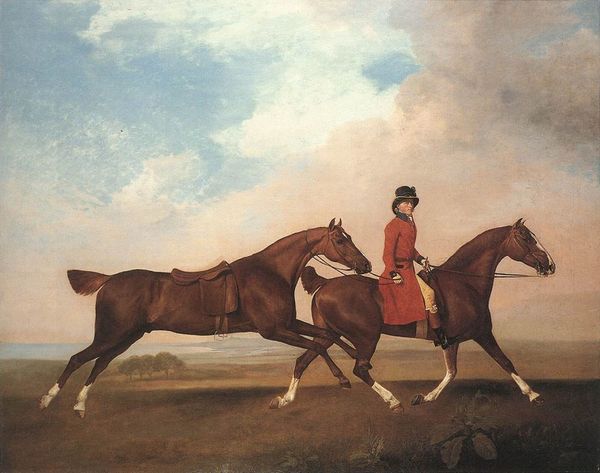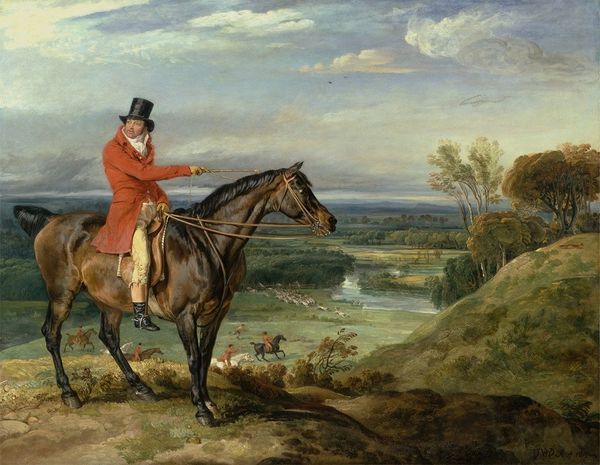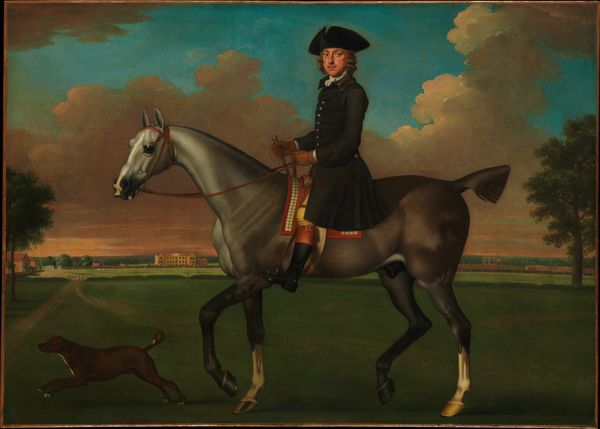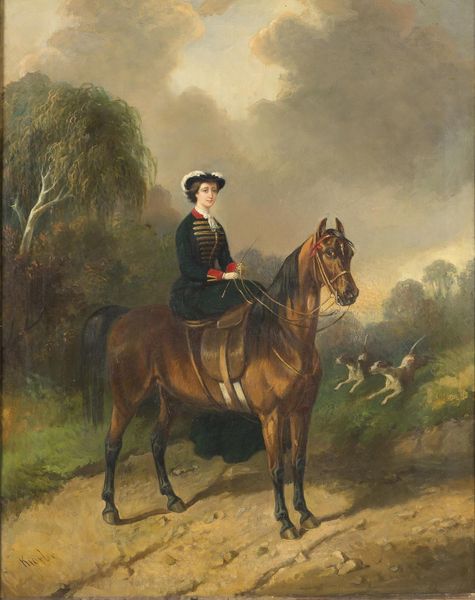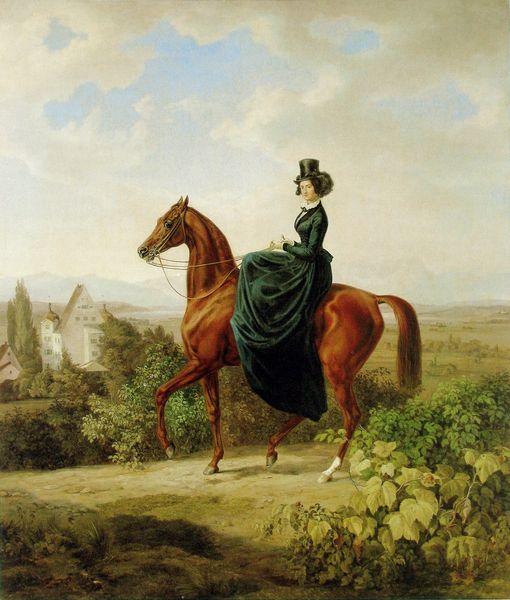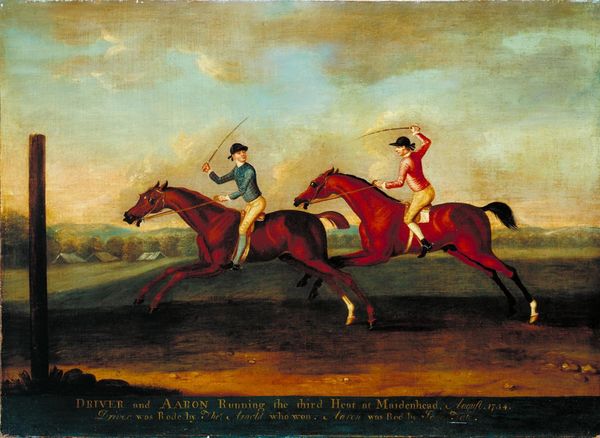
painting, oil-paint
#
portrait
#
figurative
#
painting
#
oil-paint
#
landscape
#
figuration
#
oil painting
#
romanticism
#
animal portrait
#
genre-painting
#
erotic-art
Copyright: Public Domain: Artvee
Editor: This is Théodore Géricault's "Horsewoman," painted after 1820, using oil paints. The woman seems quite self-possessed. I'm struck by how her dark riding habit contrasts with the speckled horse and the ominous sky. What's your take on this painting? Curator: Géricault's “Horsewoman” encapsulates the evolving social status of women and their representation in art. It's not merely a portrait, but an assertion of a woman’s engagement with traditionally masculine spheres like horsemanship. Think about the French Revolution’s impact; it shifted aristocratic norms and opened avenues for women to participate in public life, even if still constrained by societal expectations. Editor: That's a fascinating point about shifting social norms. But doesn’t her attire – that dark, almost severe riding habit – seem to contradict a sense of newfound freedom? Curator: Precisely. It’s a controlled display of empowerment. Look at how the artwork avoids direct eye contact, which keeps this as a performance, instead reflecting on the prevailing artistic and cultural values of the time. Editor: So, you're saying it’s a calculated performance rather than a genuine expression of freedom? That is eye-opening, reflecting her place in a time of social and political upheaval. I now view it through a different lens, realizing how intertwined art is with its time and social mores. Curator: Exactly. The horse, too, becomes a symbol: both a source of power for the rider and a valuable object within this socio-economic context. What might that say about gender roles then? Editor: I guess it paints a nuanced picture of women claiming agency in a world that's still grappling with traditional roles and expectations. Thank you!
Comments
No comments
Be the first to comment and join the conversation on the ultimate creative platform.
